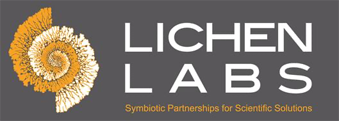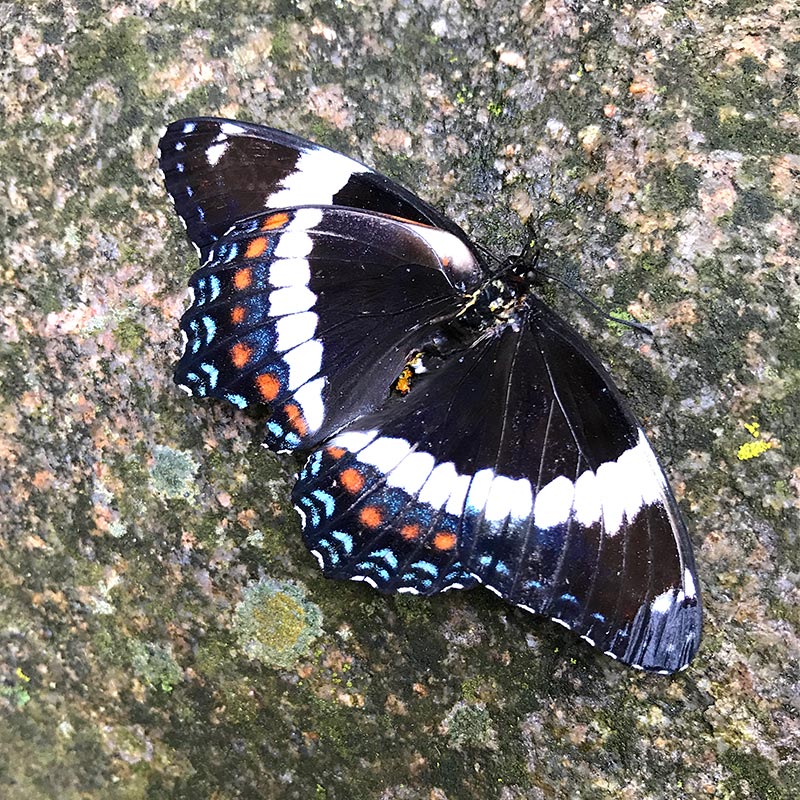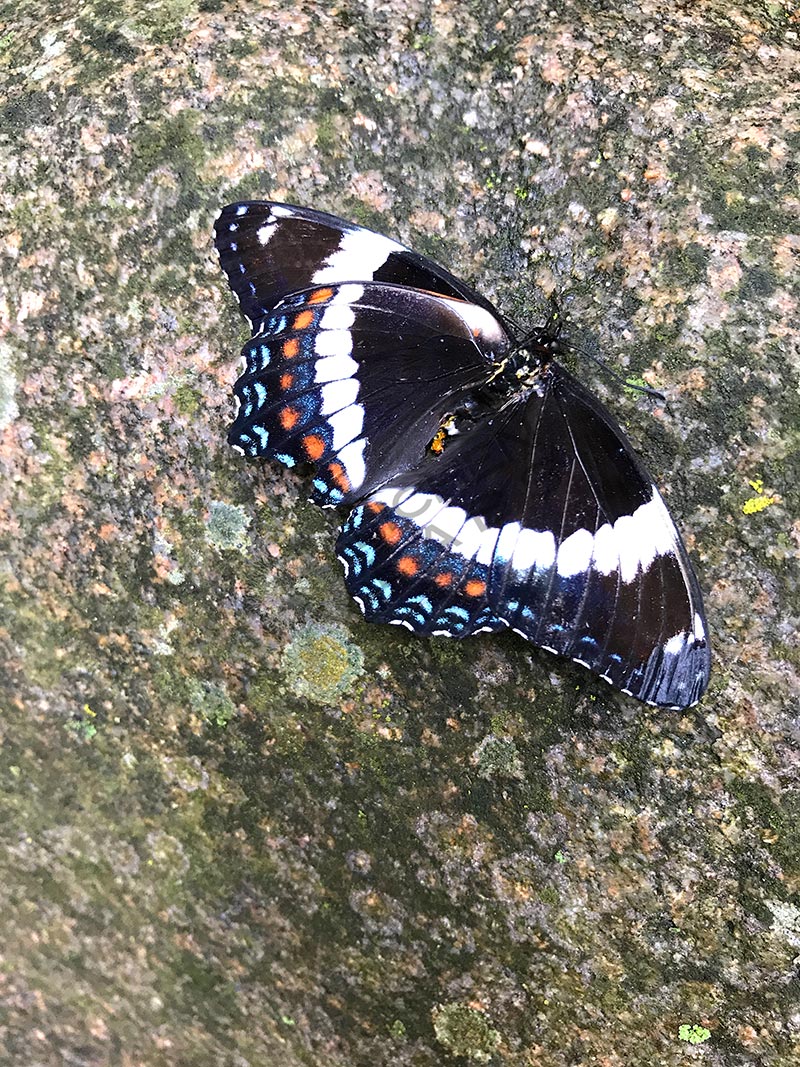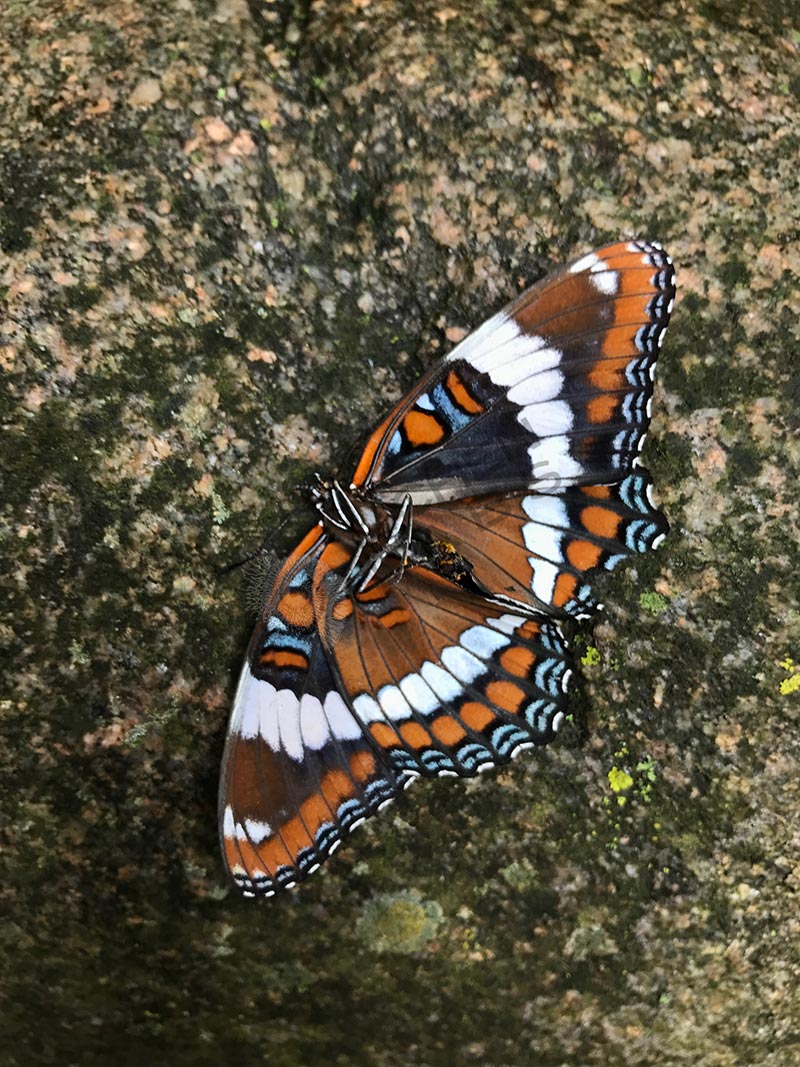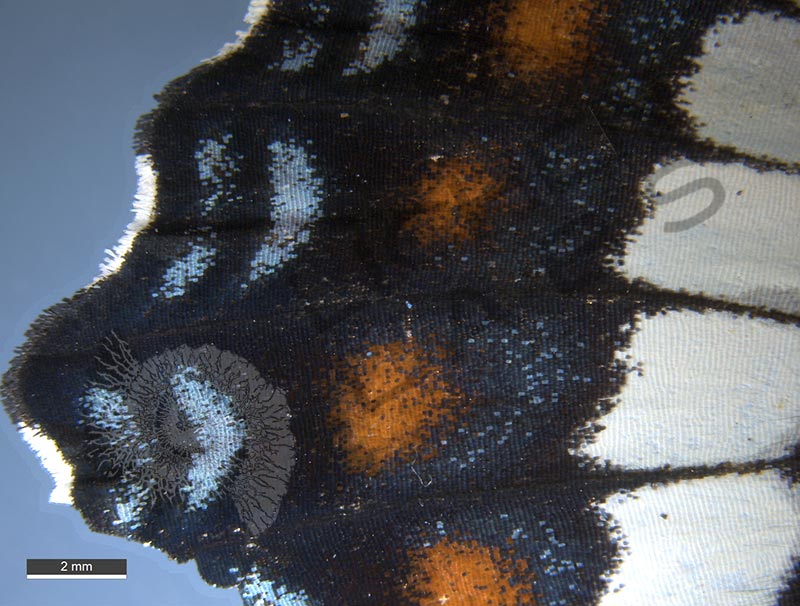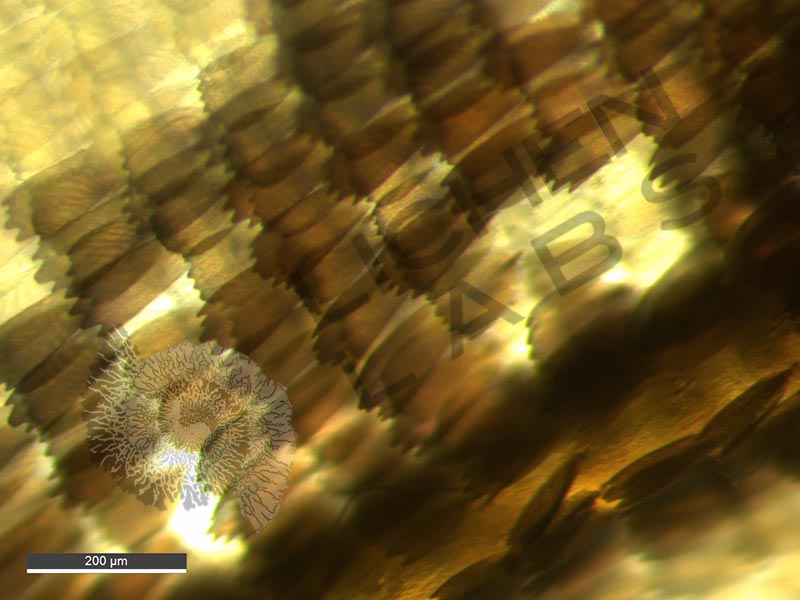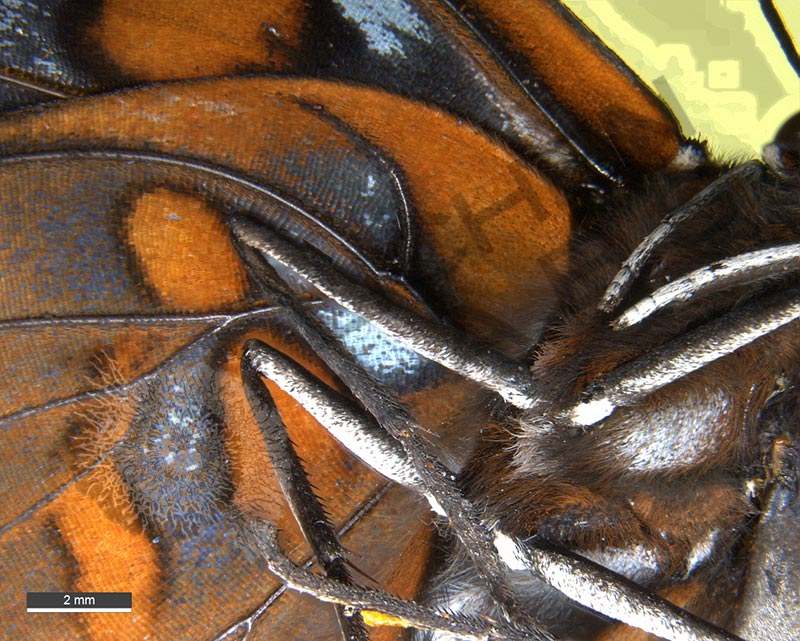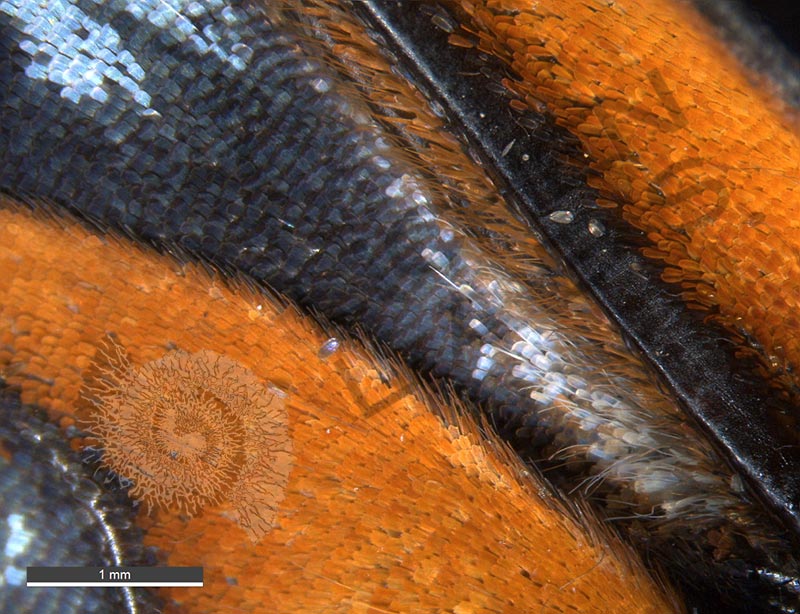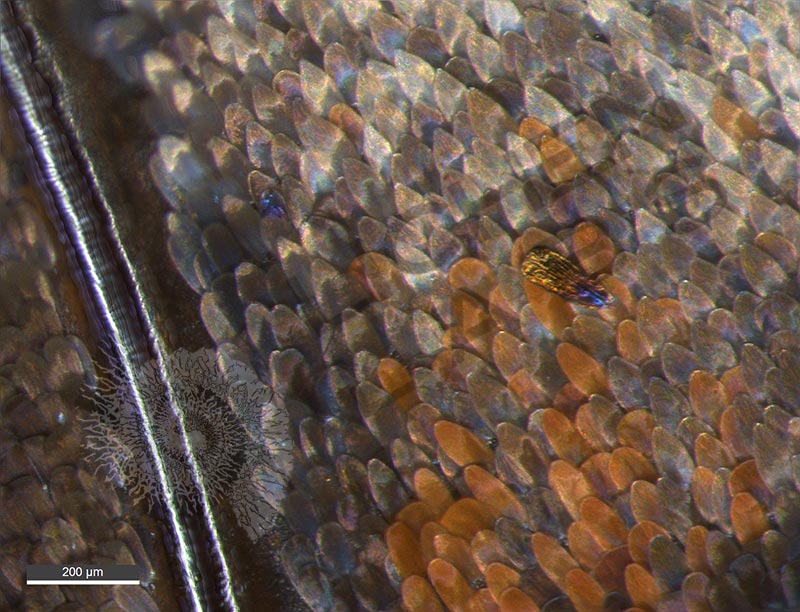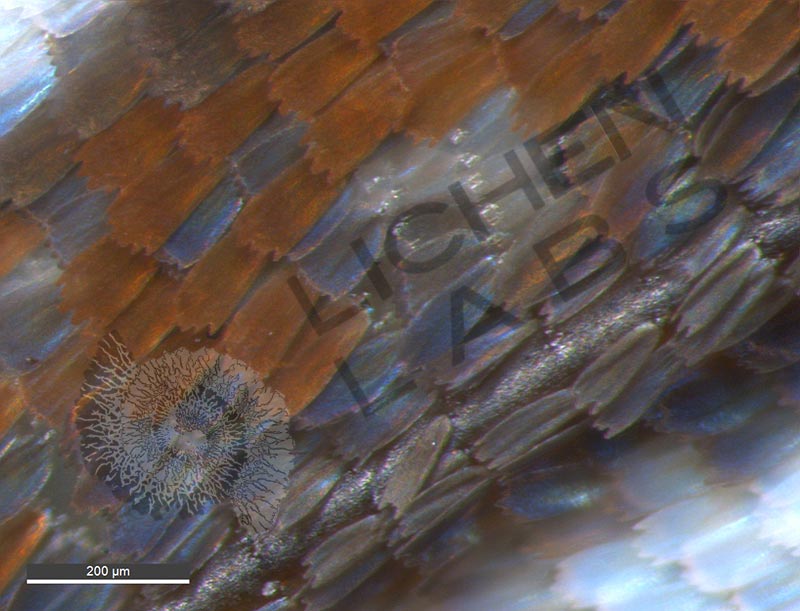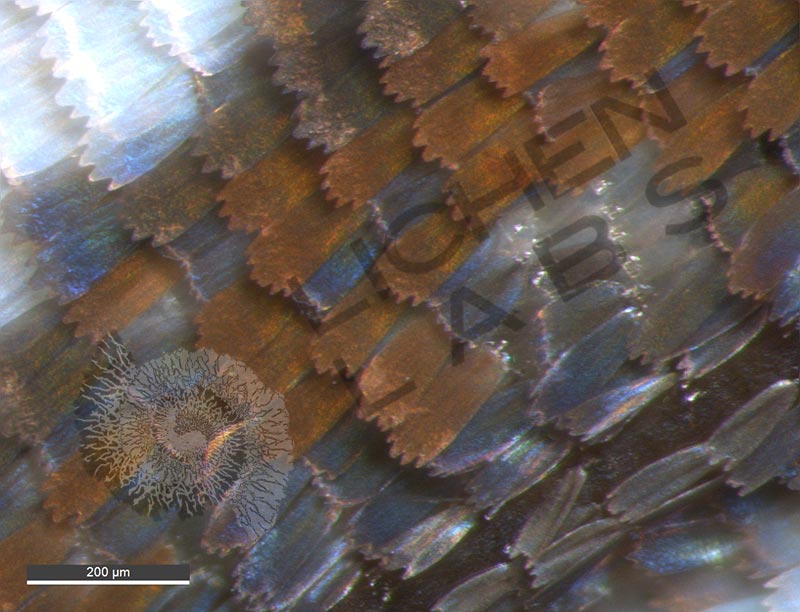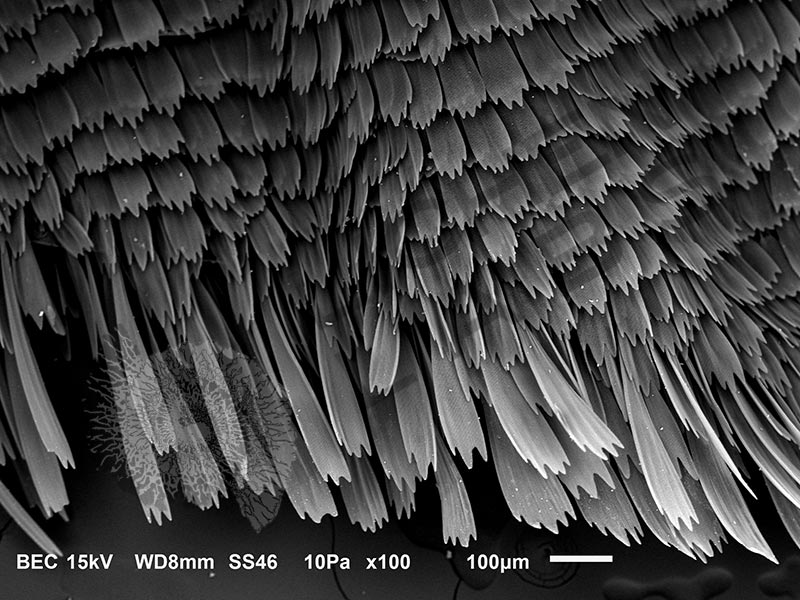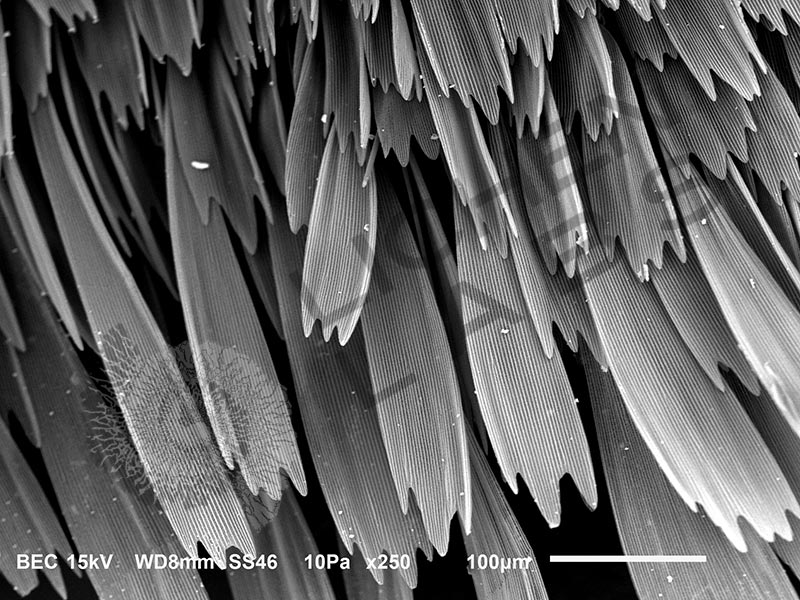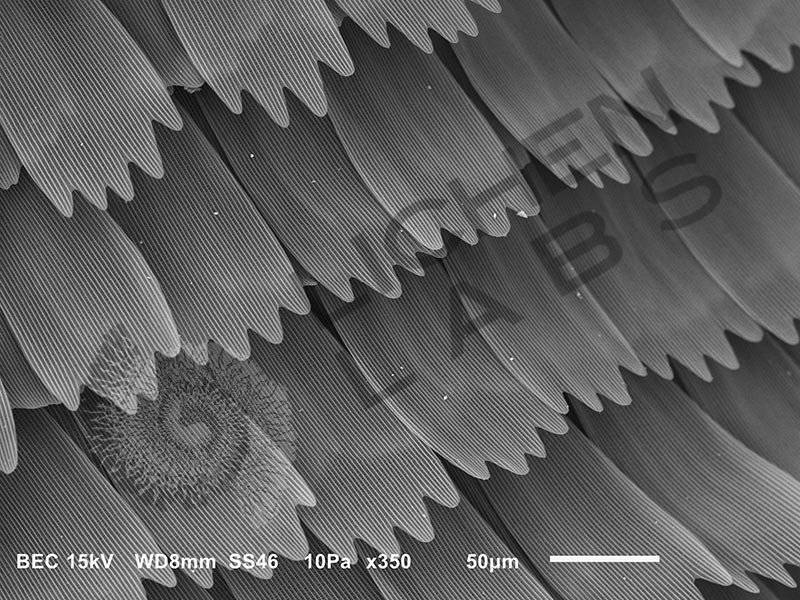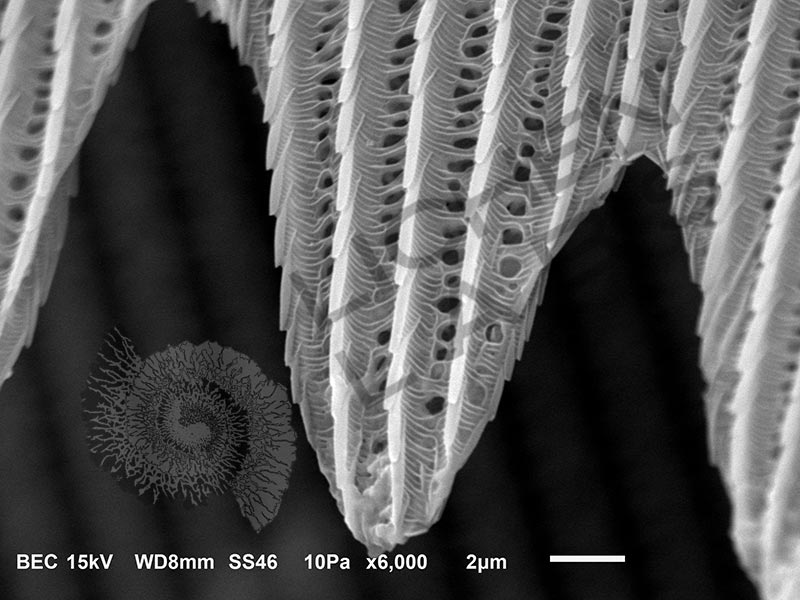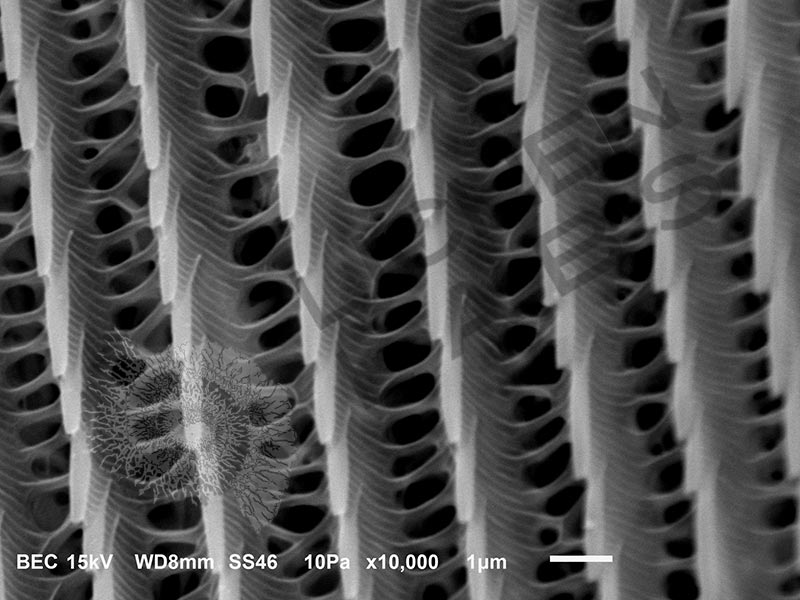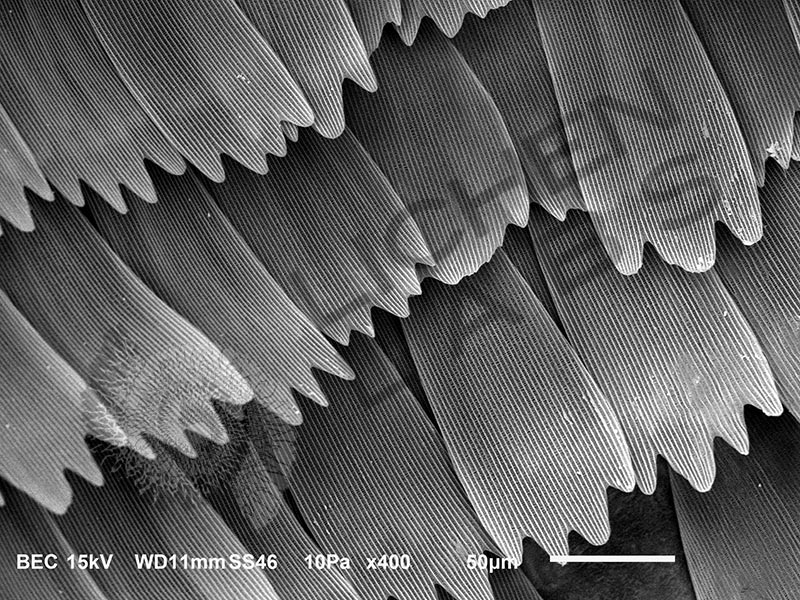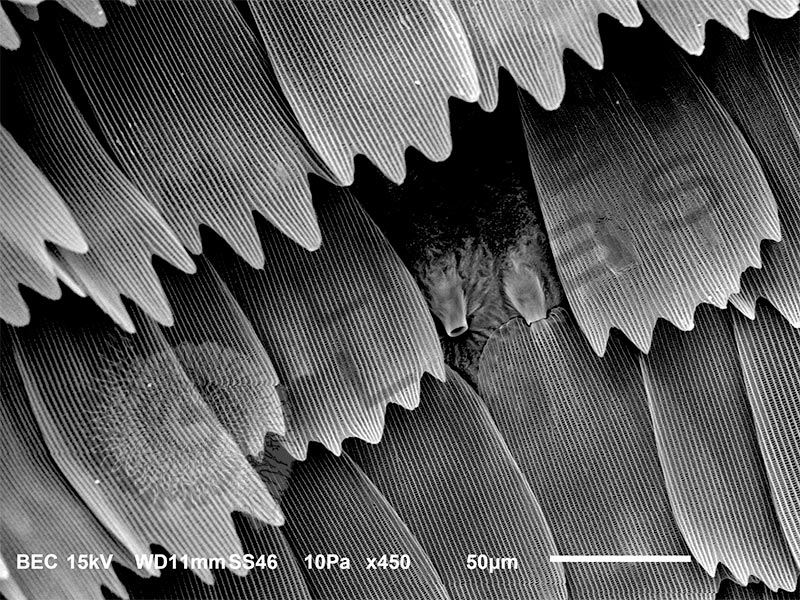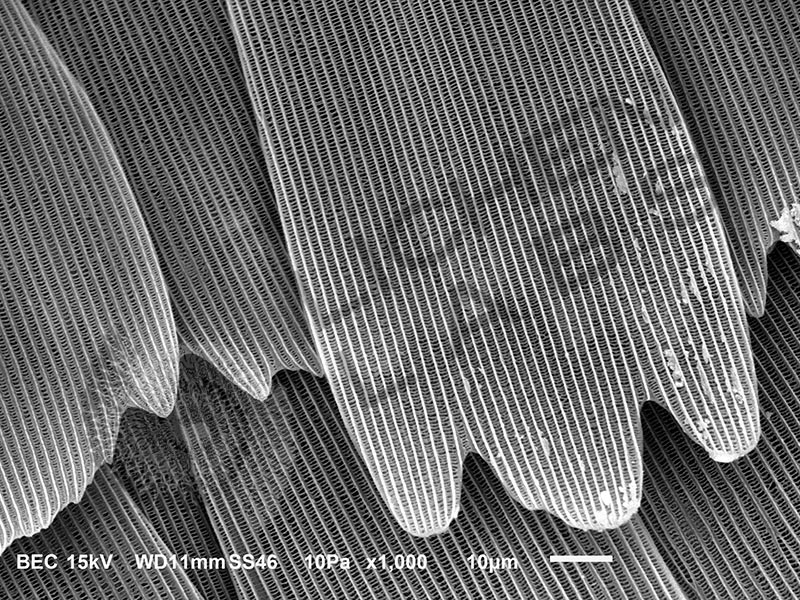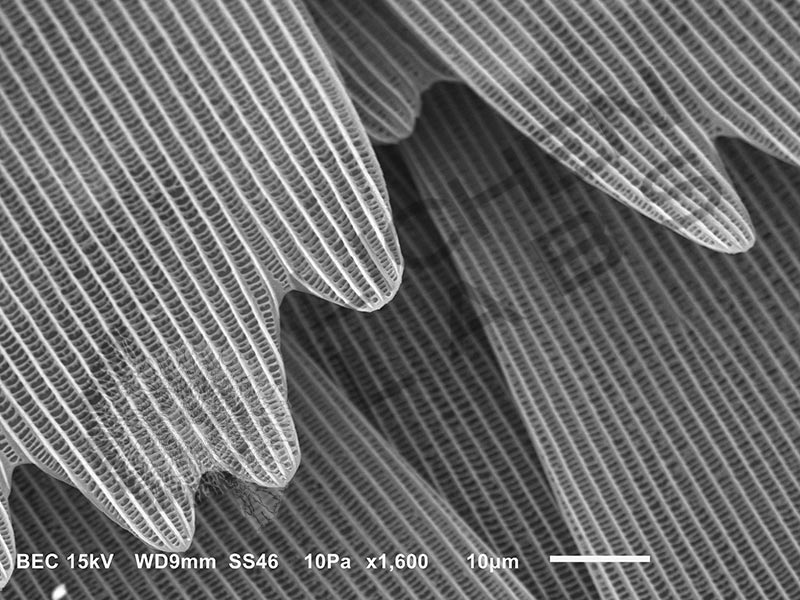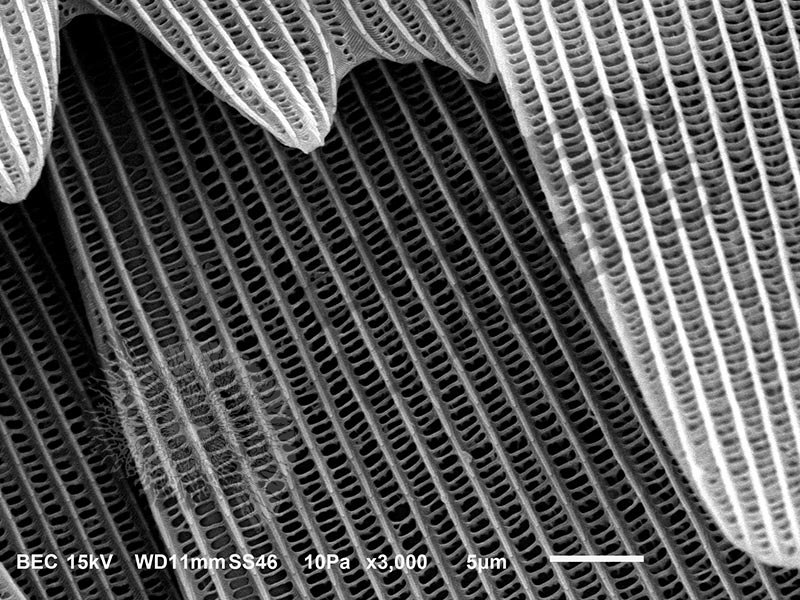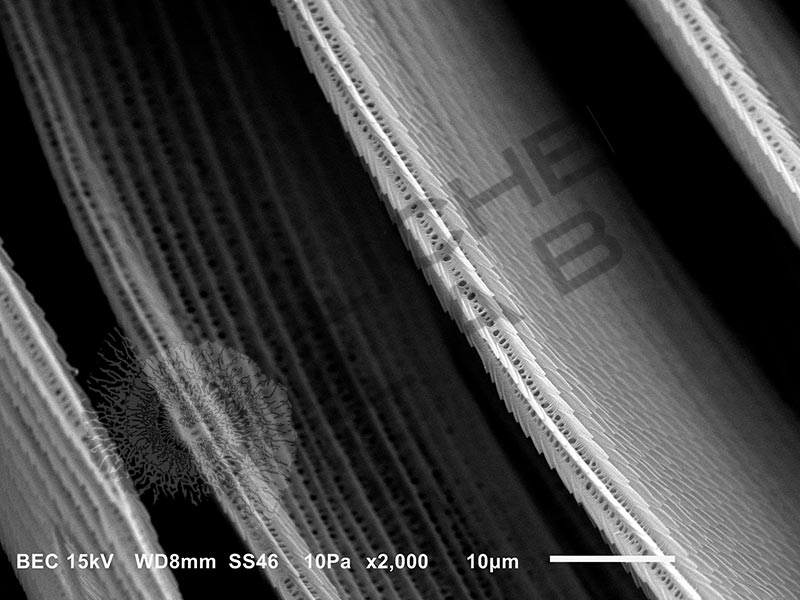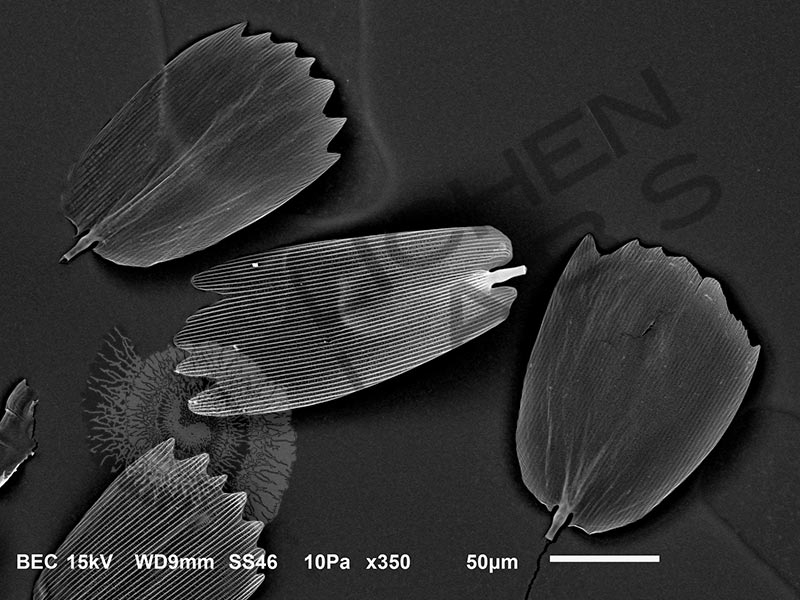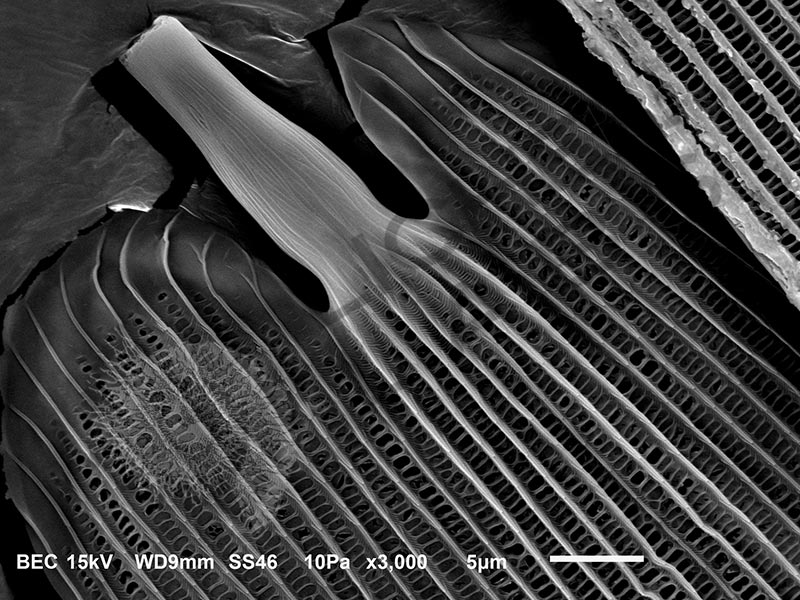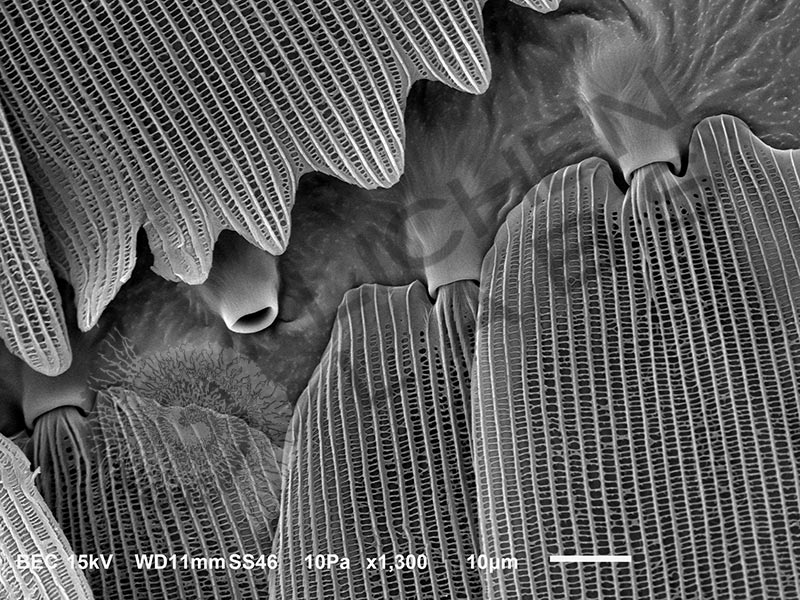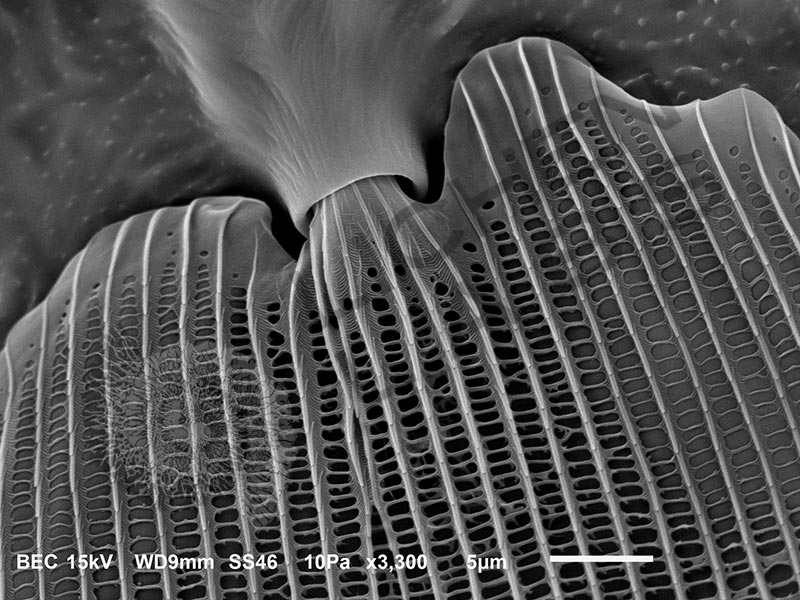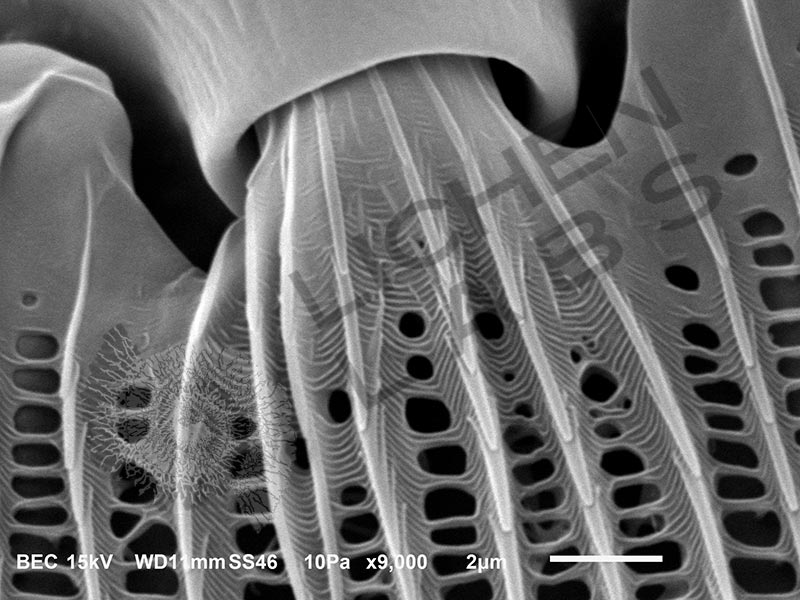Product Description
Have you ever really looked at a butterfly wing up close?

The wing is filled with row upon row of overlapping tiny scales like tiles on a roof. The white admiral butterfly wing is magnified above left at the 7X setting in a stereo microscope, 350X in an SEM above center, and individual scales removed and shown above right. The scales are made of chitin. Chitin is the primary component in exoskeletons of crustaceans and insects, the scales of fish, and cell walls of fungi. You may have touched a butterfly or moth wing and seen what looked like dust or pollen coming off. Those tiny bits are the individual scales. Each scale is easily dislodged to help the butterfly escape the grasp of predators. It has a unique angled plugin system. The base of the scale has a peg called a pedicel that plugs into a socket.

White Admiral Butterfly wing scale pedicel is shown above left and a row of sockets with scales plugged in in the center. The blade (body) of the scale has thin upper and lower lamina. The sides of the scales are shown above right). The regular grating pattern and intricate porous structures are used in diffraction of light, creating structural color (see blue morpho image explanation).
https://en.wikipedia.org/wiki/Scale_(insect_anatomy)
https://www.intechopen.com/books/lepidoptera/introductory-chapter-lepidoptera
PURCHASE 5 OR MORE IMAGES AND GET 20% OFF YOUR ENTIRE ORDER!
Please contact us for custom images.
The image store is a collection of organisms that have been examined under a stereo light microscope (LM) and or scanning electron microscope (SEM). Each group of organisms has a short description and a longer more detailed description or story about the organism. Clicking on the product group shows the individual images. Each series takes the observer from macro to micro or nano on a particular organism, starting with a macro photographic image(s) for perspective, micro images taken by the light microscope, and most have micro to nano scanning electron microscope images. The SEM images will appear in black and white as a beam of electrons is used to illuminate the specimen rather than light. A few SEM images are colorized (lotus leaf). More information about the labeling and techniques used is below.
For the curious:
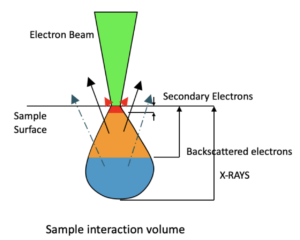
The light microscope images are labeled LM and a Z is included if it is a vertical composite of images effectively extending the depth of field or EDF of the microscope.
SEM images are labeled by the type of detector use:
SE (secondary electron)
LSE (Low vacuum secondary electron)
BES (backscattered electron shadow mode)
BEC (backscattered electron compositional mode)
The SEM instrument works by producing a beam of electrons under a vacuum that interacts with the sample surface and subsurface producing different signals, as shown in the diagram at right. Secondary electrons, backscattered electrons and x-rays are detected using different instrument modes. In addition to morphological information to produce an image the SEM can determine elemental composition by energy dispersive x-ray spectroscopy (EDS).


